Zambia wasted no time in making a splash at last week’s Investing in African Mining Indaba, the annual four-day event at Cape Town’s International Convention Centre that brings together investors, political leaders, commodity traders, and companies across the mining value chain to network and, above all, to identify investment opportunities.
President Hakainde Hichilema addressed the event’s opening session, driving home Zambia’s “Invest with Confidence” message by listing over $4 billion in mining sector investments that have been made since he was elected in August 2021. The President highlighted First Quantum Minerals’ strong progress with its S3 expansion of the Kansanshi mine – which will come online in 2025 – and includes upgrading the mine’s on-site smelter to “boost downstream beneficiation”, he said. This is among the investments that are already “bearing fruit”, he said, with over $1 billion being invested in the project in 2024 alone.
Exciting announcements were in no short supply, with President Hichilema commending KoBold Metals’ “significant progress in defining the orebody at its Mingomba project”, adding that its discovery of Zambia’s largest copper deposit in a century – announced in a cleverly-timed news article a few hours before – suggests that Mingomba has the potential to become the world’s third-largest copper producer.
Later that day, Anglo American CEO Duncan Wanblad said that the miner would consider acquisitions in Zambia, where the company previously had operations but exited in 2002. “Zambia is doing a really good job of making mining investable in that country,” the CEO said, adding, “It seems to me there is quite a lot of action behind the talk.”
Day 1 of the event was only halfway through, and all eyes were on Zambia.
Mining for Zambia asked attendees at the bustling Zambia pavilion about the types of partnerships they sought at the event and how, ultimately, these would help to get Zambia’s minerals out of the ground, beneficiated, and put to work in developing the country.
***
For Dr Sixtus Mulenga, mining stalwart and owner of a greenfield manganese operation called Musamu Resources, last week’s Mining Indaba was an opportunity to meet with businesspeople from across the mining value chain – from investors, to the all-important logistics companies that will ensure that, once his company goes into production, the minerals safely reach their next destination. But Dr Mulenga’s vision goes far beyond exporting ore.
“I’m looking for potential investors I can work with in developing an integrated mining operation that will ultimately end up with a beneficiation plant. I’m hoping to build a plant that will produce chemical manganese for making electric car batteries, and another that can produce a manganese alloy used in manufacturing steel. Basically, the goal is to be able to use every aspect of the ore by beneficiating it. The Indaba was excellent for me in the sense that it delivered what I came to search for.”
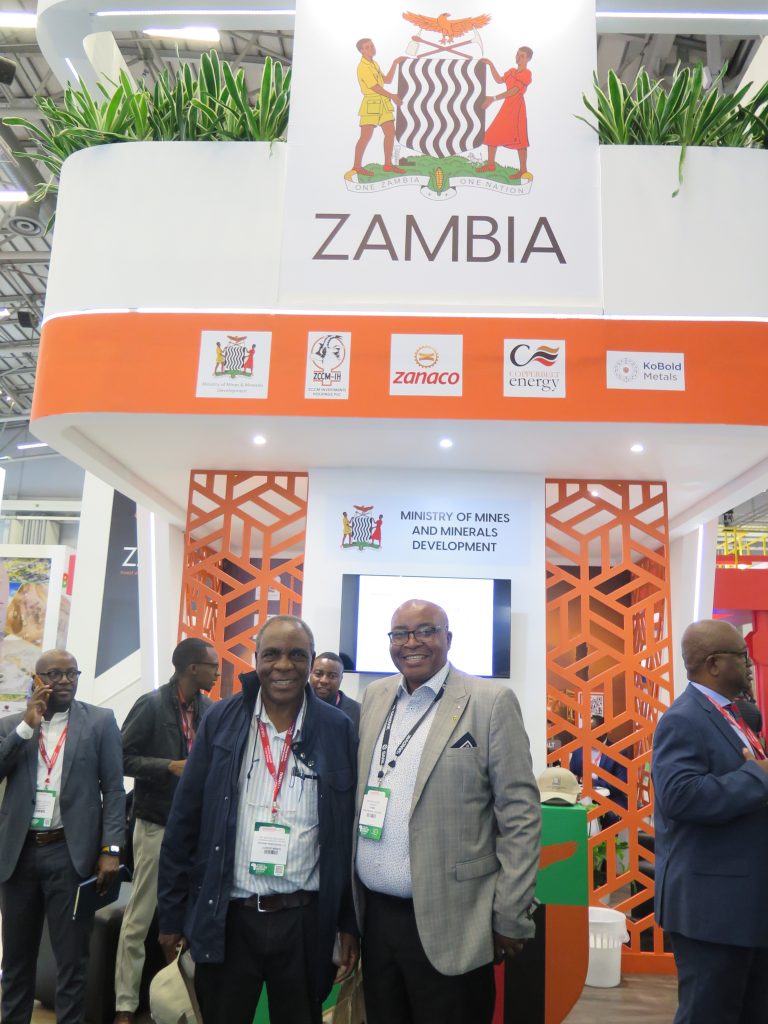
Adding value to Zambia’ minerals
Encouraging ‘beneficiation’ or ‘value addition’ is one of Zambia’s Government’s major goals, and it was also a recurring theme at the Indaba, with several of the event’s presentations and panel discussions honing in on the benefits of adding value to minerals before host countries export them. Value addition includes everything from processing copper ore into concentrate (which has a far higher copper component), to turning rough gems into jewellery.
That’s exactly what Kariba Minerals, one of Zambia’s largest amethyst producers, focused on at the Indaba, with the mining company showcasing an exquisite selection of rings, and pendants at their perpetually-busy stand within the impressive two-storey Zambia pavilion.
Each piece of jewellery on display was made right here in Zambia, via partnerships with local artisans. “Recently, we started a value addition initiative of cutting and polishing our own gemstones, and getting into the jewellery market as well,” said Mr Peter Phiri, General Manager of Kariba Minerals, which is owned by ZCCM Investments Holdings (ZCCM-IH), the state-owned successor company to Zambia Consolidated Copper Mines Limited.
Mr Phiri said that, as a first-time attendee, he was impressed by the number of opportunities at Cape Town’s Indaba, adding that the event is similar to the annual Zambia International Mining and Energy Conference (ZIMEC), but on a much bigger scale. “We were lucky to make contact with a South Africa-based company that works with gemstones, which is also into cutting, polishing and jewellery making. This company has been trying to get into the Zambian market and they are willing to partner with us in setting up a gemstone lapidary centre in Zambia and facilitating skills transfer. It’s a perfect fit for us, allowing us to add more value to the rough stones we mine.”
“This company is willing to partner with us in setting up a gemstone lapidary centre in Zambia and facilitating skills transfer. It’s a perfect fit for us, allowing us to add more value to the rough stones we mine.”
Mr Mwamba Ngumbwe, Investments Analyst at Zambia Gold Company Limited (ZGC) – another of ZCCM-IH’s subsidiaries – also had a productive series of meetings at the Indaba, some of which were around value addition, too.
“The experience of being at the Indaba has been exciting. On the first day, our President gave an address and – if you look at the positive sentiments that a lot of people have shown at the Indaba – I think his speech boosted confidence in Zambia. We’ve had a lot of people coming to the Zambia pavilion, making enquiries with the Ministry of Mines, and also asking about the various companies and subsidiaries under the ZCCM-IH group – including Zambia Gold Company Limited (ZGC),” said Mr Ngumbwe.
Several of these enquiries came from businesspeople based in the Middle East and Asia, from traders, to companies interested in conducting exploration and developing mines. “Apart from that, a South African company that’s involved in making minted coins has shown interest in partnering with Zambia Gold on value addition,” said Mr Ngumbwe.
As with Kariba Minerals, a partnership would likely involve skills transfer – in this case the skills needed to mint gold coins of various sizes, with 99.99% purity. “These are standard coins – something like Krugerrands – that can be stored as an investment value which, over time, are expected to increase in price,” said Mr Ngumbwe. “We would have to purchase equipment for the minting process and, in the long term, we would learn to do the minting on our own.”
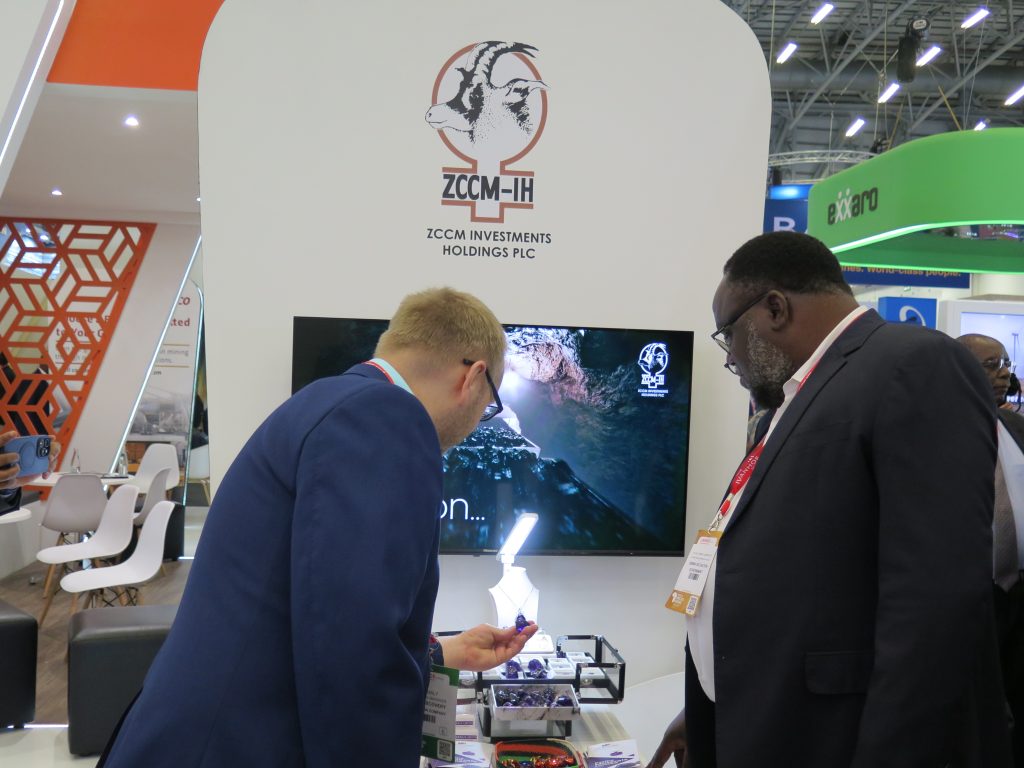
“If you look at the positive sentiments that a lot of people have shown at the Indaba – I think the President’s speech boosted confidence in Zambia. We’ve had a lot of people coming to the Zambia pavilion, making enquiries with the Ministry of Mines.”
Financing Zambia’s mining boom
Mining is extremely capital intensive and Zambia’s banking sector plays a vital role in its development, facilitating access to funding for everything from substantial mining operations to small start-ups that provide services to the sector.
Zanaco’s CEO, Ms Mukwandi Chibesakunda, is excited about the country’s prospects. “During the last three Mining Indabas, Zanaco has grown in stature as a partner to entities that are in Zambia or entering Zambia – whether directly in the mining sector, or in peripheral areas, for example the energy, transportation, or logistics sectors. We’ve also been able to engage and build partnerships with the Small and Medium-Sized Enterprises (SMEs) in the mining sector.”
Mr Mwindwa Siakalima, Chief Executive at Stanbic, said that optimism around Zambia’s mining sector was palpable at this year’s event. “We had a big, positively disruptive announcement at the Mining Indaba two years ago – namely, Zambia’s ambition to produce three million tonnes of copper in ten years – and I think that set the tone for where we are today. Two years down the line, billions of the dollars of investment in the sector that were pledged by different mining houses are beginning to come through. A lot of progress has been made, so there’s a lot of optimism.”
He also emphasised the role that other sectors will play in mining’s growth.
“Investments in energy and infrastructure will be key in supporting the mining sector’s growth ambitions, and how we will finance this is key. At this Indaba in particular, naturally there have been discussions about how Stanbic can work with energy companies, including solar energy.”
But the event goes beyond meeting potential clients, explains Mr Siakalima. “This gathering brings all kinds of stakeholders to one place, from policymakers, to lawyers, accountants, consultants, and international agencies. Beyond just meeting clients, we also meet with entities that can find solutions to help us meet the needs of our clients. Everybody is here at the Indaba!”
A return to Zambia
It isn’t just Anglo American that is considering a return to Zambia. ZCCM-IH Board Chair, Mr. Kakenenwa Muyangwa said: “We are meeting people who looked at Zambia 10-15 years ago, and decided to invest somewhere else. Now, they’re coming back and saying ‘I think things have changed; we want to find out what we can do within Zambia’.”
Mr Muyangwa said there was a mixture of “investors, partners, potential partners, suppliers, and funders” who are looking for opportunities. “There’s a lot of excitement, and it’s from all over the world. We’re seeing interest from the Middle East, from Europe, the USA, and all the other traditional potential sources of investment – and we’re talking to all of them.”

Speaking at a breakfast event held by Zambia’s Association of Zambian Mineral Exploration Companies (AZMEC), Mr Sokwani Chilembo, CEO of the Zambia Chamber of Mines, said he was pleased by the extent to which discussions and networking had been part of this year’s event. “This is what the Indaba is all about: meeting people.”
Mr Michael Phiri, Tax Partner at KPMG Zambia, echoed the optimism of the other Zambian attendees that found themselves in such high demand last week.
“We began the Indaba with KoBold Metals’ big announcement about finding some very good deposits, in addition to the announcements about First Quantum’s S3 project, which will come on stream next year,” said Mr Phiri. “Zambia is generally buzzing in terms of mining. The atmosphere is good, the environment is good, and so the mining industry is on a growth trajectory, which is as it should be.”
Forecasts show that, in order to reduce carbon emissions in line with the Paris Agreement, within 20 years the world will need double the amount of copper currently being produced. The role that Zambia will play is, undoubtedly, exciting. But a fair amount of patience will be necessary, too. Developing a mine typically takes 10-15 years from the time a mineral resource is identified, to the mine going into production. CEO of KoBold Metals Africa, Ms Mfikeyi Makayi, says that the company is aiming to develop Mingomba into a mine “faster than ten years”, potentially starting to sink shafts around 2027 – and that’s incredibly fast in the mining world.
Zambia put its best foot forward at the Indaba, and the groundwork for attracting the investment necessary to develop the mines of the future is being laid. For Zambians who are eager to see our copper production rise again, the biggest challenge may be patience.
See also: Open for business

















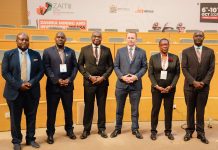


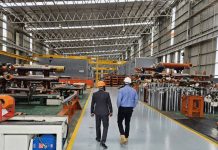

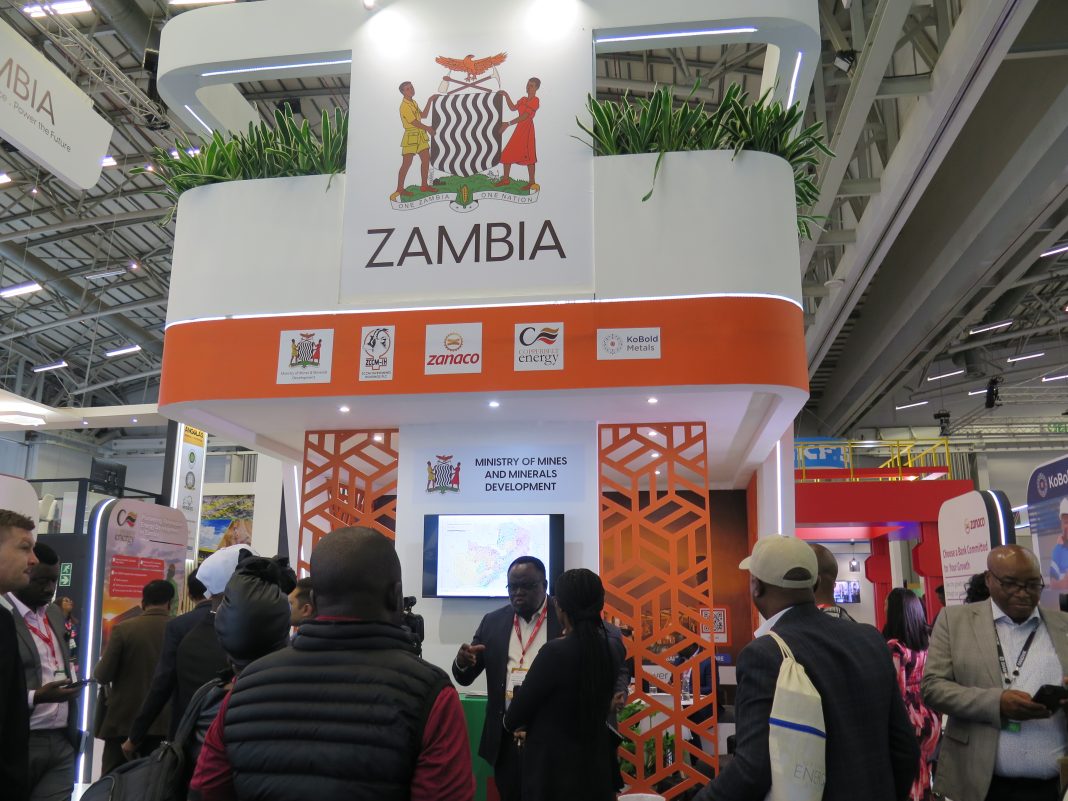
Well….put….
All in all, when all is said and done…let these investment benefit the Citizens of this mineral rich country….
Zambia is set to be the new Dubai of Africa if it plays it’s cards very well…..
Zambia set for real investment in the mining sector.
We should review the mining Tax Regime we might think that investors are rushing to invest in Zambia, but alas this could because of our poor policies regarding mining. Lets emulate what Magufuli left in place in Tanzania, a deliberate policy of not allowing Raw minerals to leave the Country. Namibia is implementing that as and many west African Countries.
Someone else has to eat, build a house,buy a car and what we get us ordinary citizens are the changes from Dubai.
WE SHOULD HAVE A PLANTIFORM AT THIS YEARS MINNING INDABA AS SMALL AND ARTISANAL MINERS AND SHARE OUR EXPERINCE.WE MAKE UP A LARGE NUMBER OF MINERS IN ZAMBIA.A LECTURE CAN SHARE HIS MINNING EXPERINCE AT A WORKSHOP WHEN HE DOES NOT A LINCENCE AND MINE AND WORK AT A MINE BUT SOMEONE WHO GOES INTO THE PITS AND DIGS THE COPPER AND COBALT CANNOT SHARE HIS EXPERINCE THAT IS NOT FAIR.